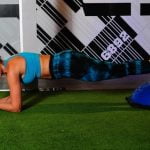Looking to outfit your gym or fitness center with top-of-the-line sport & fitness commercial exercise equipment? Look no further. Commercial exercise equipment plays a critical role in the success of fitness facilities, offering a wide range of benefits for both professional athletes and casual gym-goers alike.
When it comes to creating an effective and efficient workout space, the type of commercial exercise equipment you choose can make all the difference. From cardio machines to strength training equipment, the options are endless, each serving a specific purpose in helping users achieve their fitness goals.
In this article, we will explore the importance of commercial exercise equipment in fitness facilities, the different types available, and the numerous benefits it offers for professional athletes. We will also discuss how to choose the right equipment for your gym or fitness center, maintenance tips, as well as its role in rehabilitation centers and physical therapy clinics.
Finally, we will take a look at recent innovations in sport & fitness commercial exercise equipment and consider what the future holds for this essential aspect of the fitness industry. Stay tuned for valuable insights into maximizing your facility’s potential through strategic investment in commercial exercise equipment.
Types of Sport & Fitness Commercial Exercise Equipment
When it comes to outfitting a fitness facility with commercial exercise equipment, there are numerous options to consider. From cardio machines to strength training equipment, having a variety of options is essential for catering to the diverse needs and preferences of gym-goers.
Cardio machines such as treadmills, ellipticals, stationary bikes, and rowing machines are popular choices for fitness centers. These machines help users improve their endurance, burn calories, and strengthen their cardiovascular system. In addition to traditional cardio equipment, many facilities also invest in more specialized options such as stair climbers and versa climbers.
For those looking to build strength and muscle, there are several types of commercial exercise equipment available. This includes free weights such as dumbbells, barbells, and weight plates, as well as resistance machines that target specific muscle groups. Cable machines, Smith machines, and functional training rigs are also common in fitness facilities.
Another essential category of sport & fitness commercial exercise equipment is functional training gear. This includes items like stability balls, resistance bands, kettlebells, medicine balls, and suspension trainers. These versatile tools can be used for a wide range of exercises that improve balance, flexibility, core strength, and overall functional fitness.
| Cardio Machines | Strength Training Equipment | Functional Training Gear |
|---|---|---|
| Treadmills | Free Weights (Dumbbells/Barbells) | Stability Balls |
| Ellipticals | Resistance Machines | Resistance Bands |
| Stationary Bikes | Cable Machines/Rigs | Kettlebells/Medicine Balls/Suspension Trainers |
Choosing a diverse selection of sport & fitness commercial exercise equipment ensures that your facility can accommodate individuals with varied fitness goals and abilities. Additionally offering inclusive options makes the workout experience more engaging and enjoyable for all members.
Benefits of Using Commercial Exercise Equipment for Professional Athletes
Professional athletes require specialized equipment to support their intensive training and fitness routines. Utilizing commercial exercise equipment designed for professional athletes offers a wide range of benefits, including:
1. Targeted Muscle Training: Commercial exercise equipment is specifically designed to target and strengthen the muscles used in various sports. For example, machines such as leg presses, cable machines, and squat racks are essential for athletes to improve their power, speed, and agility.
2. Injury Prevention and Rehabilitation: High-quality commercial exercise equipment helps professional athletes prevent injuries by providing proper support and resistance for targeted muscle groups. Additionally, many rehabilitation facilities utilize commercial exercise equipment in their programs to aid in the recovery process for injured athletes.
3. Performance Enhancement: Through the use of advanced technology and innovative designs, commercial exercise equipment can assist professional athletes in enhancing their performance. Equipment such as cardio machines with interval training programs or specialized strength training machines can help athletes push their limits and achieve optimal results.
In addition to these benefits, incorporating commercial exercise equipment into the training regimen of professional athletes also allows them to customize their workouts based on their specific needs and goals.
Overall, investing in high-quality commercial exercise equipment is crucial for professional athletes looking to enhance their athletic performance while preventing injuries. By utilizing specialized machines designed for targeted muscle training, injury prevention, rehabilitation, and performance enhancement, professional athletes can optimize their training routines and maximize their potential on the field or court.
How to Choose the Right Commercial Exercise Equipment for Your Gym or Fitness Center
When choosing commercial exercise equipment for your gym or fitness center, it is important to consider the needs and preferences of your clientele. The right equipment can make a significant impact on member satisfaction and retention. Here are some factors to consider when selecting commercial exercise equipment for your facility:
- Assess the space available: Before investing in commercial exercise equipment, take measurements of your facility’s space to determine the available square footage for workout equipment. This will help you narrow down the options and ensure that the selected pieces fit comfortably within the designated area.
- Consider the demographics of your members: Understanding the demographics of your members is crucial in selecting suitable commercial exercise equipment. For example, if your facility caters to older adults, you may want to invest in low-impact machines such as recumbent bikes or ellipticals. On the other hand, if your clientele consists of serious athletes, high-performance strength training equipment and cardio machines may be more desirable.
- Quality and durability: When choosing commercial exercise equipment, prioritize quality and durability to ensure longevity and safety for users. Look for reputable brands known for their sturdy construction and innovative features that enhance user experience.
By carefully considering these factors, you can make informed decisions when selecting commercial exercise equipment for your gym or fitness center. Investing in high-quality equipment that meets the needs of your members will contribute to a positive workout experience and set your facility apart from competitors.
Commercial Exercise Equipment Maintenance Tips
Commercial exercise equipment is a critical component of any fitness facility, and proper maintenance is key to ensuring its longevity and functionality. Without regular maintenance, exercise equipment can quickly become unsafe and ineffective, leading to potential injuries and dissatisfied members. Here are some essential tips for maintaining commercial exercise equipment in your gym or fitness center.
Regular Inspections
One of the most important aspects of commercial exercise equipment maintenance is regular inspections. Equipment should be thoroughly inspected on a daily basis to ensure that all parts are in good working order. Loose bolts, worn-out cables, and malfunctioning electronics can all pose serious safety hazards to users. By conducting routine inspections, you can identify issues early on and address them before they become major problems.
Cleaning and Lubrication
Regular cleaning and lubrication are also crucial for the upkeep of commercial exercise equipment. Sweat, dirt, and grime can build up on machines over time, leading to corrosion and mechanical issues. Additionally, moving parts such as pulleys, bearings, and joints should be regularly lubricated to ensure smooth operation. Following manufacturer guidelines for cleaning products and lubricants is essential to prevent damage to the equipment.
Professional Maintenance Services
While daily inspections and routine cleaning are important, it’s also vital to have professional maintenance services performed on a regular basis. Hiring certified technicians to conduct thorough inspections and repairs will help prevent major breakdowns and prolong the lifespan of your commercial exercise equipment. Professional maintenance services may include belt tension adjustments, motor testing, electronic diagnostics, and overall performance evaluations.
By implementing these maintenance tips for your commercial exercise equipment, you can ensure the safety of your members while prolonging the lifespan of your fitness facility’s investments. Regular inspections, cleaning, lubrication, and professional maintenance services are all essential components of effective equipment upkeep in any gym or fitness center environment.
The Role of Commercial Exercise Equipment in Rehabilitation Centers and Physical Therapy Clinics
Rehabilitation centers and physical therapy clinics play a crucial role in helping individuals recover from injuries, surgeries, and chronic conditions. The use of commercial exercise equipment in these facilities is essential for enabling patients to regain strength, flexibility, and mobility while undergoing rehabilitation and therapy.
Commercial exercise equipment provides a safe and controlled environment for patients to engage in targeted exercises that are designed to aid in their recovery. The wide range of equipment available, including treadmills, stationary bikes, resistance machines, and balance tools, allows therapists to create tailored exercise programs that address each patient’s specific needs.
One of the key benefits of utilizing commercial exercise equipment in rehabilitation centers and physical therapy clinics is the ability to track progress and monitor performance. Many modern machines are equipped with advanced monitoring systems that allow therapists to assess the patient’s range of motion, strength levels, heart rate, and other vital indicators. This data is invaluable for adjusting treatment plans and ensuring that patients are making steady progress towards their recovery goals.
Moreover, the use of commercial exercise equipment in these settings helps to improve patient compliance with their prescribed rehabilitation programs. By offering a variety of engaging and effective exercise options, therapists can keep patients motivated and committed to their recovery journey. Ultimately, this leads to better outcomes and a higher level of satisfaction among individuals undergoing rehabilitation or physical therapy.
| Commercial Exercise Equipment Benefits | Rehabilitation Centers |
|---|---|
| Provides a safe environment for targeted exercises | Allows patients to gain strength and flexibility |
| Enables tracking progress and monitoring performance | Improves patient compliance with therapy programs |
| Offers engaging exercise options for motivation | Leads to better outcomes & higher patient satisfaction |
Innovations in Sport & Fitness Commercial Exercise Equipment
Advanced Technological Features
In recent years, there has been a surge in the development of advanced technological features in sport and fitness commercial exercise equipment. From built-in touchscreens with interactive workout programs to virtual reality integration, these innovations are revolutionizing the way individuals engage with their fitness routines. One notable example is the use of artificial intelligence to personalize workout plans based on an individual’s performance and feedback, providing a truly tailored experience for each user.
Eco-Friendly Designs
As the demand for sustainable practices continues to grow, manufacturers of commercial exercise equipment are incorporating eco-friendly designs into their products. This includes using materials that are environmentally friendly, reducing energy consumption, and implementing recycling initiatives. Additionally, some companies are developing equipment that generates electricity through human power, allowing users to contribute to the facility’s energy needs while working out.
Integration With Wearable Technology
Another significant innovation in sport and fitness commercial exercise equipment is its integration with wearable technology. This includes compatibility with fitness trackers, smartwatches, and other wearable devices that allow users to monitor their performance metrics in real-time. By seamlessly syncing data from the equipment to their wearable devices, athletes and fitness enthusiasts can gain valuable insights into their workouts and track their progress more effectively.
These innovations not only enhance the user experience but also contribute to the overall advancement of the fitness industry. As technology continues to evolve, we can expect even more groundbreaking developments in sport and fitness commercial exercise equipment in the future.
The Future of Commercial Exercise Equipment in the Fitness Industry
In conclusion, the future of commercial exercise equipment in the fitness industry looks promising. With continuous innovations, advancements in technology, and growing demand for high-quality equipment, the market for sport & fitness commercial exercise equipment is expected to thrive. As more individuals and professionals prioritize physical health and wellness, the need for top-notch exercise machines will only continue to increase.
Furthermore, the role of commercial exercise equipment goes beyond just aiding professional athletes or gym-goers. Rehabilitation centers and physical therapy clinics also heavily rely on specialized machines to help patients recover from injuries or regain mobility. This demonstrates that commercial exercise equipment has a far-reaching impact on overall public health and well-being.
As new technologies emerge and consumer demand evolves, it is likely that we will see even more innovative features integrated into commercial exercise equipment. From virtual reality workouts to personalized training programs, the possibilities for enhancing user experience are limitless. The future of sport & fitness commercial exercise equipment is not only about meeting the needs of today’s exercisers but also about anticipating and addressing the needs of tomorrow’s fitness enthusiasts.
Frequently Asked Questions
What Is the Equipment for a Commercial Gym?
Commercial gyms typically use a variety of equipment to cater to different workouts and training needs. This includes treadmills, elliptical machines, weight machines, free weights, resistance bands, benches, and other specialized strength and cardio equipment.
Why Is Commercial Gym Equipment So Expensive?
Commercial gym equipment tends to be expensive due to several reasons. First, it needs to be built with high-quality materials and components to withstand heavy and constant usage.
Additionally, the technology and features incorporated into commercial gym equipment contribute to its higher cost. Finally, the scale of production for commercial gym equipment is usually smaller compared to consumer grade equipment, which drives up the cost per unit.
What Brand Equipment Do Gyms Use?
Gyms often use well-known and reputable brands for their equipment due to the reliability and durability they offer. Some popular brands seen in commercial gyms include Life Fitness, Precor, Hammer Strength, Cybex, Technogym, Nautilus, and StairMaster. These brands are trusted for their quality and performance in a commercial setting where the equipment is heavily used on a daily basis.

Passionate about providing useful information to anyone with an interest in the field of Personal Training, I strive to pass on to our readers quality information and to answer any questions about Personal Trainers, the work they do and how to become one.





